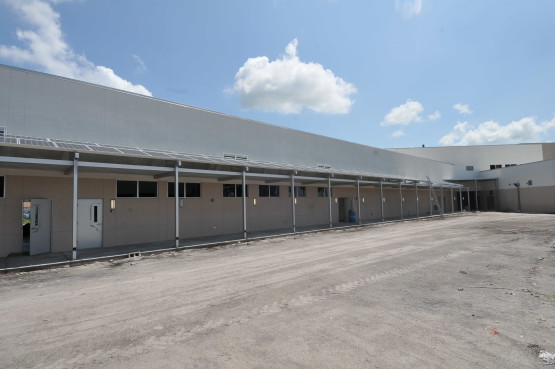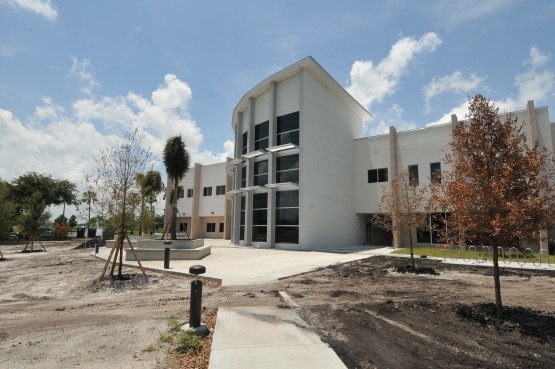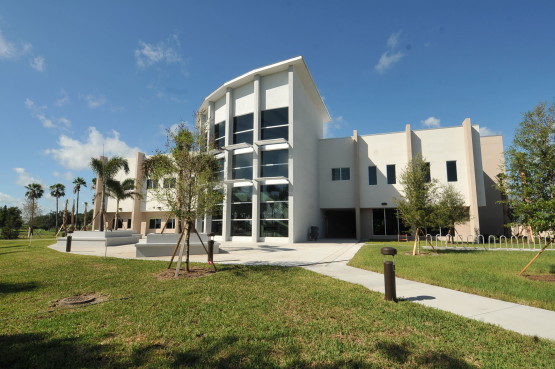This two story 33,982 square foot building is the first LEED Platinum Certified Project constructed at Palm Beach State College. The new Technical Education Center (TEC) was designed to consolidate instructional training and certification for a variety of vocational programs. CDE provided MEP design services, LEED documentation, site mechanical and electrical distribution and commissioning support for the plant. This building houses facilities for vocational classrooms and labs, administrative offices, student support services, and ancillary functions as well as auxiliary facilities for equipment and material storage. The building accommodates programs in Welding, Construction Trades, Law Enforcement, and Cosmetology. The new building was designed for a future addition of approximately 8,700 S.F. to accommodate new programs in Heavy Duty Truck and Bus Mechanics, and an expansion of the Welding program.
CDE designed Plumbing and fire protection systems for this building as well. A grey water system was designed to collect rain water from the building and existing building and condensate from air handling units. All the collected rain water and condensate drains were designed to be pumped to flush water closets and for cooling tower make-up. Wet pipe fire protection system was designed for this building.
CDE designed the entire electrical distribution for the campus, electrical system design for the building including fire alarm system and PV power for renewable energy source. CDE modeled the energy use for the entire campus and M&V proved that the model was very accurate.
CDE also designed the upgrades for the entire Belle Glades campus chiller plant. The chiller plant modifications consisted of replacing two existing chillers with 300 ton rotary screw chillers. The existing chilled water and condenser water pumps were also replaced. The cooling towers were also replaced with new cooling towers.
Based on all of the modifications, the campus energy use significantly reduced. Even after the TEC building addition, the campus energy use was lower than the previous years due to primary variable chilled water flow modifications, high efficiency chiller operation and dual-path AC system design for the new building.


